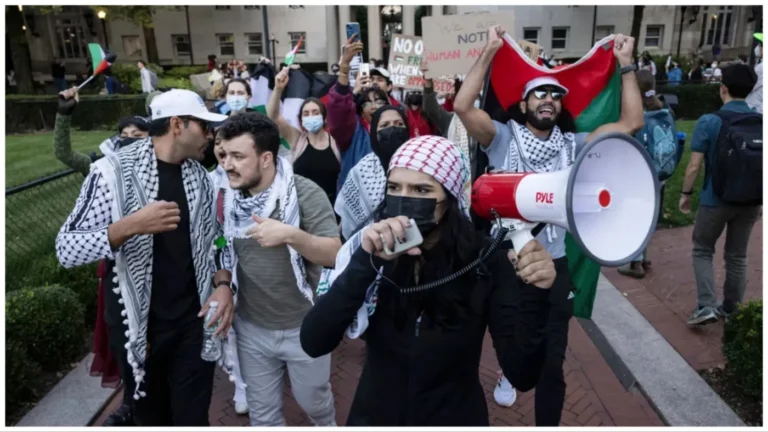 [By Rabbi Yair Hoffman]
[By Rabbi Yair Hoffman]
A great debate has ensued between the state governments of New York and New Jersey versus the CDC in regarding Ebola. The state governors are requiring that all health Care workers who have travelled to Ebola stricken nations and have worked with them should be placed under forced evaluation and quarantine. The federal government, on the other hand, has stated that this treatment discourages health care workers from helping and should be stopped.
All this brings up the question as to the Torah’s perspective on deadly and highly communicable diseases. Is there a Mitzvah of Bikkur Cholim in such cases? Is there a prohibition? Should the health care workers make the trip to the Ebola countries?
R-nought Values
Before we look at the halachic aspects let us first identify some terminologies when it comes to diseases. There is something called the R-nought value. The R-nought value (or R0) is a measure of how contagious a disease is. Measles, for example is highly contagious and has an R-nought value of 18. This means that on-average a typical person with measles will infect 18 other people. Measles is contagious through the air just like the flu. Mumps has an R-nought of 10 and HIV has an R0 of 4. Ebola has an R-nought value of 2.
Four Types of Pathogens
We must also realize that infectious diseases kill more people throughout the world than any other single cause. Infectious diseases are caused by pathogens. Pathogens are tiny living things that are found everywhere. They are found in the air we breathe, the soil, and in the water we drink. You can get infected by touching, eating, drinking or breathing something that contains a germ. Germs can also spread through animal and insect bites,and other forms of human contact. There are four main types of pathogens: Bacteria, Viruses, Fungi, and Protozoa.
Bacteria are one celled pathogens that both multiply quickly as well as release harmful chemicals. Viruses are semi-life forms or capsules that contain genetic material that use your own cells to multiply. Fungi are primitive plants that grow in moisture and often thrive where sugar can be found. Protozoa are one-celled living things that use other living things for both food and shelter.
Yet properly protecting ourselves from exposure, using vaccines, and washing our hands with friction, soap, and hot water can prevent most illnesses.
How Infectious
This brings us to another term with which we must familiarize ourselves. The second term is how infectious the particular disease is. And Ebola is highly infectious. Indeed, one drop of an infected person’s blood can hold up to one million virus particles. These particles can infect you even if they land on your skin.
And now, onto the halacha.
Those Who Do Not Exempt Infectious Diseases
The Beis Yoseph (Choshain Mishpat 426:2) cites a fascinating Talmud Yerushalmi in Trumos (end of chapter 8) which states that a person is obligated to place himself in possible danger to save someone from certain danger. For anyone who saves a life it is as if he has saved the entire world.
We may ask: What may the Yerushalmi be referring to? It seems that it refers to all four types of pathogens and even illnesses with a non-insignificant R-nought number.
The Ramah in a responsa (#20) indicates that the Mitzvah of Bikkur Cholim applies even to epidemic diseases – even if there is danger. The Shach (CM 312:2) cites this Ramah as well. The parameters of this Ramah, however, are not so clear. The Ramah excludes some diseases that are highly contagious – such as Raasan and Tzaraas (See Shiurei Knesses HaGedolah YD 335). [Apparently, these diseases were highly contagious in the time of the Gemorah].
In examining this Ramah as well, he writes clearly that there is no exemption for diseases with a higher R-nought number. Yet, it seems, he does provide exemptions for illnesses with a very high R-nought number.
The Chida in his Chesed L’Avrohom (5:28) writes that during an epidemic, there is a special Mitzvah to gird one’s loins and visit the ill – and it is a special Mitzvah to bury the dead during this time as well. He also quotes the verse, “Hashem watches over fools..”
Rav Eliezer Waldenberg zt”l in his Tzitz Eliezer (Vol. IX 17:5) writes [only] in regard to a doctor that he is obligated to insert himself into situations of potential danger to save people. Otherwise, the Tzitz Eliezer seems to forbid it. One may conjecture that the Tzitz Eliezer exempts anything with an R-nought number that is contagious and as far as how infectious the illness is he requires doctors to treat them. Rav Waldenberg seems to assume that doctors know how to minimize or contain the contagiousness of the illness.
Authorities Who Forbid Bikkur Cholim
On the other hand we find authorities who have a different view. It is somewhat strange that the Yerushalmi cited by the Beis Yoseph is not mentioned by any of the Rishonim or earlier codifiers. Indeed the Agudas Ezov explains this lacunae by explaining that, in their view, the Babylonian Talmud disagrees with this Yerushalmi.
There are others with this view as well. The Sefer Chassidim 674 writes that if someone observes someone who is very heavy drowning in a river – one should not endanger oneself in a rescue attempt since he too is very likely to drown. The Netziv in He’emek Sh’ailah 129 explains that the essential halacha is not to place oneself in possible danger to save another. However, if one wishes to do so as a Middas Chassidus.
The Sdei Chemed (Bikkur Cholim) writes that the issue is a debate among Rabbinic authorities, and the custom is for regular people not to visit someone that has a dangerous and communicable disease. However, the custom is to have special group of people do the Bikkur Cholim. Ostensibly, this group is aware of how to take precautions against being exposed.
The Mishna Brurah writes (329:19) that even if there is a chance of danger, one is not obligated to assist – because a safaik sakanah is more of a factor than the words of the Mishna Brurah, however, could be interpreted that there is no obligation to do so but he could in fact be permitted to do so if he chooses.
Finally, Rav Chaim Kanievsky Shlita and Rav Shteinman Shlita are both cited in Sefer Bikkur Cholim Kahalacha (page 105) as absolutely forbidding Bikkur Cholim when there is an infectious communicable disease.
Should we place health care workers under quarantine if they were exposed to Ebola? Since it is so highly contagious, whenever we are not absolutely sure as to how health care workers donned and took off their specialized suits, it would seem that it good and proper to take such measures. If, on the other hand, we are sure that the proper protocols were taken, then the majority of the Poskim cited above would permit the visit.
May we all merit to overcome this illness and help in its worldwide eradication. Amain.
The author can be reached at [email protected]






One Response
“The Chida in his Chesed L’Avrohom”
Isn’t the Chesed L’Avrohom the grandfather of the Chida?